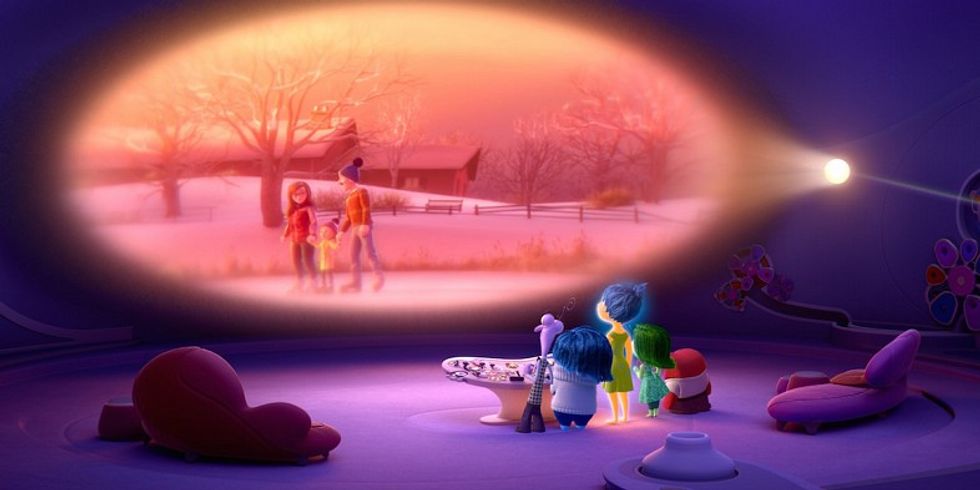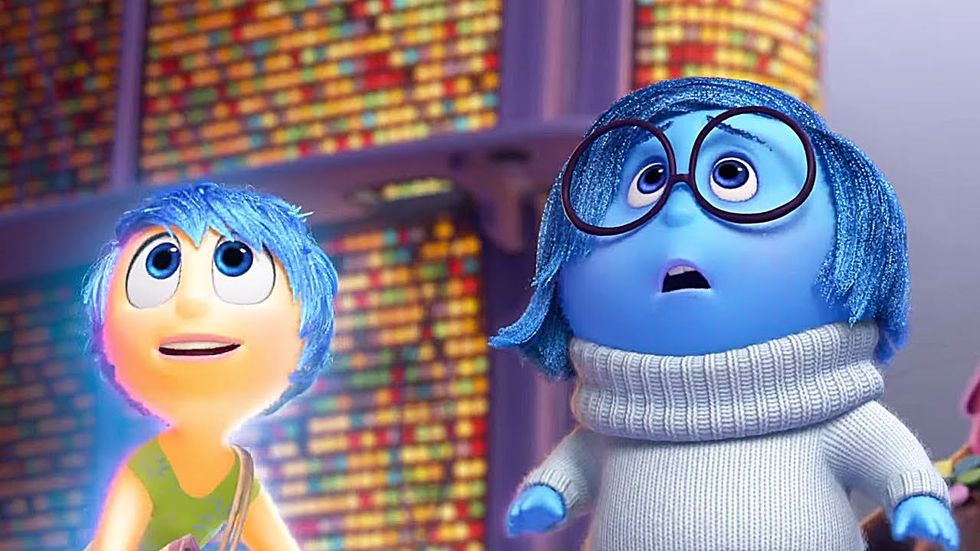Disney Pixar’s new film Inside Out made over $500 million at the global box office when it came out, making it Pixar’s eighth consecutive film to reach this milestone. But when you go see this innovative, entertaining, and clever movie, you don’t expect to come out of the theaters with a better understanding of your emotions.
Since I don’t want to spoil this "psycho-revolutionary" film to you, I will only give you the film’s premise and encourage you to watch it because of the important message that no other children’s movie has been able to relay the public until today. "Inside Out" is about a goofy, hockey-loving 11-year-old girl from Minnesota and how she is adjusting to her new home in San Francisco, where “they’ve even managed to ruin pizza” by putting broccoli on it. Inside Riley’s mind live five emotions: Joy, Disgust, Fear, Anger, and Sadness.
Amy Poehler is the voice for Joy, who is an upbeat character, with some micromanaging issues (think Leslie Knope from "Parks and Recreation") that always sees the positive in everything and only believes in happy moments. Joy, along with her four other friends/emotions, works in Riley’s headquarters – that is, her mind. The movie surrounds the five emotions as they are about to embark on a voyage through unknown territory: San Francisco. Due to a mishap in headquarters, however, Joy and Sadness get sent to Riley’s long-term memory. There, they have to come up with a plan to return to headquarters and help Riley fix her bond with her parents and friends. Sadness, out of all of them, is the one that ends up saving the day!
Okay, so I’ll have to agree and say that before watching the movie, I thought it was going to be like Pixar’s recent films: a great, emotional movie with a great storyline but nothing much after that. Inside Out, however, was different. This film was the first to teach us that it’s okay to be sad from time to time, that you don’t always have to be in a happy mood. Sometimes there are moments in life when feeling sad is expected; it’s normal and just a part of life. The film is almost like an introductory psychology course on childhood and personality development, but it’s a Disney film, so it doesn’t feel like a class; the movie takes you through an emotional roller coaster and leaves you with plenty of food for thought. Inside Out, as Kat Brown from The Telegraph puts it, is “an exploration of what it means to be 'happy' when sometimes you just need to be sad.”
Amy Poehler’s character, Joy, didn’t realize this. Instead, she always saw Sadness as being a burden. In the midst of chaos, however, Joy realizes Sadness’ purpose: she realizes that out of a sad moment comes a happy one. What this means is that sometimes, our happiest memories are formed right after the sad ones; just as you think you're feeling down and blue, your friends or your family do their best to cheer you up, or new, positive doors in your life are opened. Phyllis Smith’s character, Sadness, teaches us that it’s okay to feel the blues. We can’t always be expected to be happy; we sometimes have to feel disgust, fear or anger. The feeling of sorrow is what gives meaning to the others because without sorrow, the value of the others is almost nonexistent.
"Sadness is pivotal to the happy memories that are created, as without her there can be no value to the feeling of joy. The qualities of her character enable the other emotions to exist, thus allowing the child to experience the full joy and wonderment of childhood.” This is what a Disney spokesperson said in reference to Phyllis Smith’s character, but I nonetheless believe it holds true: sadness and happiness are equally important emotions.
Sorrow is not a sign of a weak personality; it plays an important role in our lives by helping us appreciate the value of our other feelings, such as joy. My mother used to joke and tell me that the most successful children’s TV shows or movies are those that entertain the children and refresh the adult mind simultaneously. Inside Out does just that.










 The minimum wage is not a living wage.
StableDiffusion
The minimum wage is not a living wage.
StableDiffusion
 influential nations
StableDiffusion
influential nations
StableDiffusion











